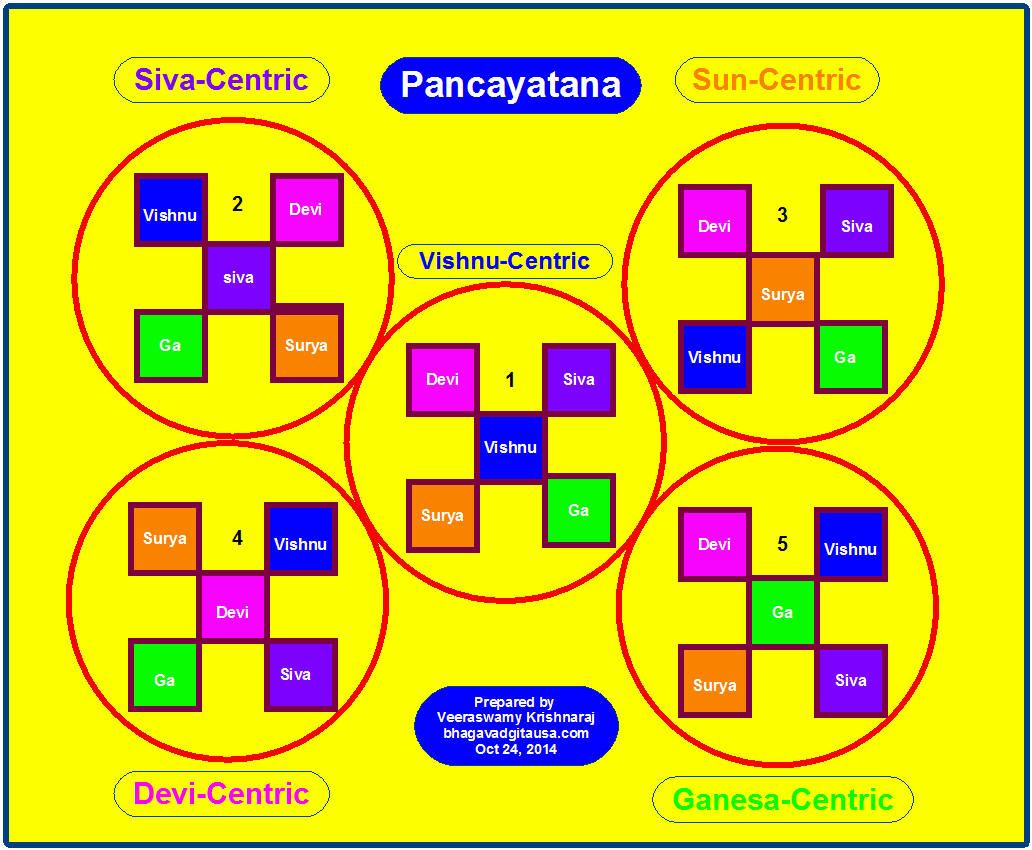|
Pańćāyatana = 5-symbol Ceremony Sankaracharya saw a chaos in the Hindu religious polytheistic worship, though people knew then that the deities were the many names of one Brahman (nameless, and formless Universal Soul with no particular attributes). He neatly brought them into worship of Sun, Vishnu, Siva, Devi and Ganesa. Hindus belonging to different sects had their own Ishta Devatas (gods or goddesses of their liking), mostly from among the five principal deities. Most of the Hindus are not strictly sectarian. Here is a depiction of deity-centric worship of the five deities, one being the central deity and the rest carrying an associate status. Sun and Vishnu are related. Devi, married to Siva, is the sister of Vishnu. Ganesa is the son of Devi and Siva. They are al related to each other one way or another. The following is the observation of Monier Williams. All five symbols are placed on a round open metal dish, called Pańćāyatana, and are arranged in five different methods, according to the preference given to any one of the five deities at the time of worship. These five methods are: - I. Vishnu in the middle; Śiva N. E. (i.e. towards the north-east quarter); Ganesa S. E.; Surya S.W.; Devi N.W. 2. Śiva in the middle; Vishnu N.W.; Surya S.E.; Ganesa S.W; Devi N.E. 3. Surya in the middle; Śiva N.E.; Ganesa S.E.; Vishnu S.W.; Devi N.W. 4. Devi in the middle; Vishnu N.E; Śiva S.E.; Ganesa S.W.; Surya N.W. 5. Ganesa in the middle; Vishnu N.E.; Śiva S.E.; Surya S.W.; Devi N.W. Then, again, on one side of the Pańćāyatana is a small bell, and on the other side a conch-shell ^, and near at hand is a water-vessel called Kalasa or Abhisheka-patra, with a small hole in the bottom of it, through which the water used for sprinkling the stones passes. These three objects are also held sacred and receive their share of worship. I should state that near the metal receptacle containing the five sacred stones is placed another metal plate on which are arranged the TulasT leaves for Vishnu and the Bilva leaves for Śiva , besides offerings of flowers, perfumes, etc. The images were drawn by Veeraswamy Krishnaraj
|
